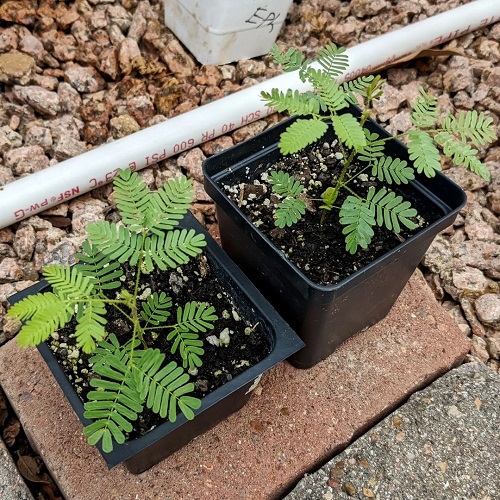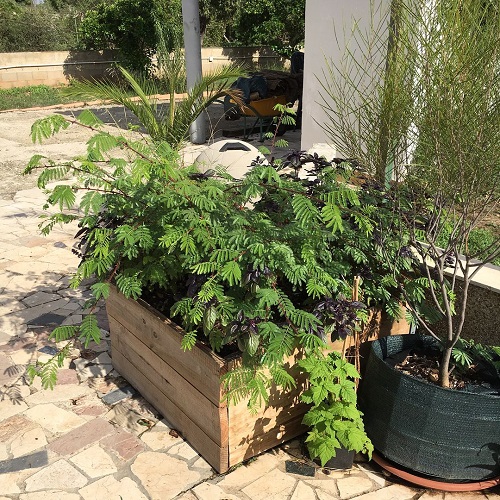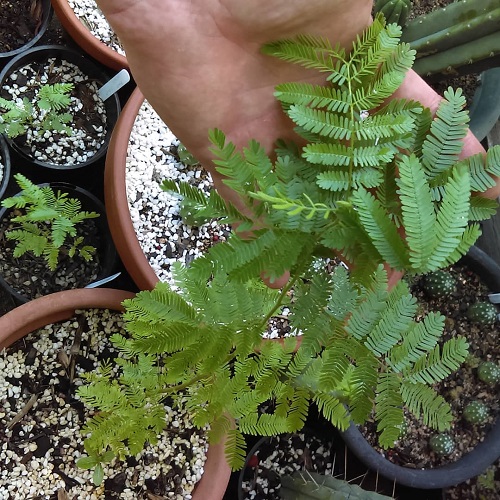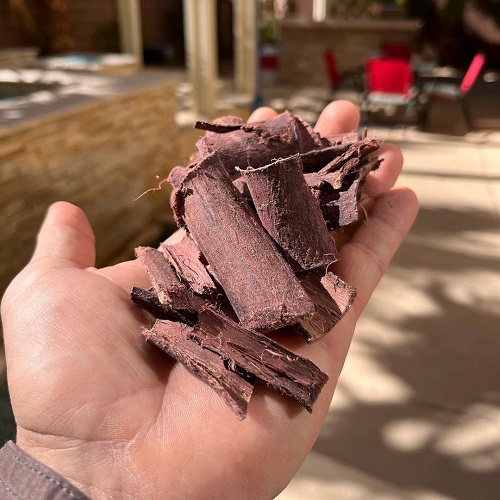Read in detail about Mimosa Hostilis Growing Information and Root Bark Uses that will help you understand it in detail.

We will explore how to grow Mimosa Hostilis and discover the many ways its powerful root bark can be used. So, keep on reading to know it all!
Learn How to Grow Kaleidoscope abelia here
Mimosa Hostilis Information
Mimosa Hostilis, also known as Jurema or Mimosa tenuiflora, is a tree native to the northeastern region of Brazil. It has been traditionally used by indigenous communities for various purposes.
The plant is native to the Caatinga biome in northeastern Brazil. It is found in regions of Brazil, Mexico, and some other parts of Central and South America.
Mimosa Hostilis has a long history of use by indigenous communities in Brazil. The inner bark of Mimosa hostilis contains various bioactive compounds. Indigenous communities have used it for its potential anti-inflammatory, antimicrobial, and wound-healing properties.
Mimosa Hostilis is a perennial tree that can reach a height of 5 to 8 meters. It has fern-like leaves and produces fragrant white flowers. The tree has adapted to the arid conditions of the Caatinga biome, with its deep root system enabling it to withstand periods of drought.
It’s important to note that it is not a plant that exhibits rapid leaf movements, such as those seen in some sensitive plant species (Mimosa pudica). The leaves of Mimosa hostilis do not have the characteristic leaf folding or closing behavior often associated with sensitive plants.
Learn Toona Sinensis ‘Flamingo’ Tree Growing Information here
Propagating Mimosa Hostilis

Growing from Seed:
- To propagate Mimosa Hostilis, start by placing the seeds in a pot with a lid. Pour boiling water over the seeds and cover the pot.
- Allow the seeds to soak in a dark location for 24 hours until they swell.
- Next, prepare a well-draining soil-filled growing tray and press one seed into each cell.
- Lightly water Mimosa Hostilis seeds and cover the tray with plastic wrap. Place the tray in a warm spot, ensuring the soil remains moist.
- Check the tray daily, ensuring the soil never dries out completely.
- Within two to three weeks, the seeds should sprout. Once sprouted, transfer each seedling to its individual container, watering regularly and providing ample sunlight.
Here are 12 Simple Seed Germination Tips To Grow Every Seed
Growing from Cuttings:
- Another method of propagating a Mimosa Hostilis tree is through root cuttings, typically done during the winter months.
- Select a root cutting between two and six inches in length, paying attention to the direction of growth in the soil.
- Plant each root cutting in a container filled with well-draining, loamy soil, ensuring it is oriented correctly to promote root formation.
- Provide regular watering and keep the containers wrapped in plastic wrap in a warm location.
- It may take several months for the root cuttings to develop roots and establish new plants. With proper care, the plants should thrive.
Propagate Any Plant Cutting Quickly Using this Trick
Requirements for Growing Mimosa Hostilis

Location
Mimosa Hostilis thrive best in full sun, although it can tolerate some shade, particularly in drier regions. For the best growth, make sure it gets a minimum of 5-6 hours of bright sunlight every day.
Soil
The plant thrives in well-draining soil. A mix of sandy soil and organic matter can create an ideal growing medium. Sandy loam soil or a cactus/succulent potting mix can work well. Avoid heavy clay soils that retain too much moisture.
Learn some Great Tips to Rejuvenate Your Old Soil here
Incorporating organic matter, such as well-rotted compost or peat moss, into the soil mix can enhance moisture retention and provide essential nutrients. This helps create a nutrient-rich environment for the roots of Mimosa Hostilis.
Water
Mimosa hostilis is recognized for its drought-tolerant nature and therefore requires minimal watering. It is important to water the plant and soil adequately, ensuring it receives enough moisture without over-saturation.
Here are the best ways to water plants
Do not water the plant on a daily basis, and do it only when the topsoil feels a little dry to the touch.
Mimosa Hostilis Care

Fertilizer
Mimosa hostilis is a low-maintenance tree that doesn’t require excessive attention, and it is advisable to avoid fertilizing it during the first year.
Once it attains a height of 1-2 feet, you can feed it using a balanced liquid fertlizer, diluted to 1/2 of its strength, once in 6-8 weeks.
Here are Effective Homemade Lawn Fertilizers That Are Safe From Hazardous Chemicals
Pests and Diseases
Be vigilant of spider mites, aphids, mealybugs, and scales. Use cotton swabs soaked in rubbing alcohol or insecticidal soap to remove these pests and ensure thorough coverage for effective control.
In diseases, be careful of root rot, powdery mildew, and leaf spots. Ensure adequate air circulation, avoid overwatering, maintain proper spacing between plants, and apply fungicides if necessary.
Click here to learn the Amazing Natural Pesticide Recipe that can Kill any Pest
Root Bark Uses of the Mimosa hostilis

- The versatile dark-brown to grayish bark of Mimosa hostilis serves various purposes. When split, the dense root bark reveals a reddish interior, imparting a maroon hue to tinctures and teas made from it.
- Brewed into a tea, it is consumed for its potential anti-inflammatory properties, promotion of blood circulation, and calming effects. The leaf tea is believed to help reduce nicotine cravings.
- Applied as a paste, its bark can aid in minimizing scarring from burns and stimulate collagen production. When ground and applied to the skin, it can alleviate inflammation caused by bug bites, cuts, and burns.
- Tea derived from the stems and leaves is popular as a natural remedy for tooth pain. A syrup made from the bark is effective in soothing sore throats, coughs, and bronchial ailments.
- Mimosa hostilis bark is full of beneficial components such as tannins, alkaloids, lipids, saponins, phytosterols, glucosides, xylose, and rhamnose.
- In high concentrations, the bark can be used for its hallucinogenic properties.

